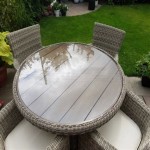Essential Aspects of Cottage Vegetable Garden Design
Cottage vegetable gardens evoke a sense of quaint charm and bountiful harvests. They are characterized by their informal style, vibrant colors, and a medley of vegetables, herbs, and flowers. Creating a cottage garden is a rewarding endeavor that can enhance both the aesthetic appeal and the culinary delights of your outdoor space. Here are some essential aspects to consider when designing your cottage vegetable garden:
1. Embrace Irregular Shapes and Organic Flow
Cottage gardens are not known for their geometric precision. Instead, they embrace an irregular and organic flow that mimics the natural landscapes of the countryside. Allow your garden beds to have gently curving edges, winding paths, and cozy nooks. This informal layout creates a whimsical atmosphere and provides a sense of abundance.
2. Plant Diversity and Vertical Gardening
Cottage gardens are known for their rich diversity of vegetables, herbs, and flowers. Plant a mix of early and late-season crops, as well as perennial and annual species. Interplanting different vegetables can improve pollination, deter pests, and maximize space utilization. Consider incorporating vertical gardening techniques, such as trellises or hanging baskets, to create a more compact and productive garden.
3. Colorful Companion Planting
Beyond their practical benefits, flowers are essential elements in a cottage garden. They add color, attract beneficial insects, and enhance the aesthetic appeal. Choose flowers that not only complement the colors of your vegetables but also provide companion planting benefits. For example, nasturtiums can deter aphids from squash plants, while marigolds are known to repel nematodes.
4. Incorporate Edible Hedges and Borders
Maximize the space in your cottage garden by creating edible hedges and borders. Plant dwarf fruit trees, such as espaliered apples or pears, as space-saving ways to enjoy fresh fruit. Lavender makes an excellent scented and insect-repellent border, while rosemary can be pruned into low-growing hedges that provide both culinary and ornamental value.
5. Create a Focal Point
Every cottage garden needs a focal point to draw the eye and create a sense of interest. This could be a decorative arbor, a rustic water feature, a large tree, or a raised bed overflowing with vibrant vegetables. The focal point should complement the informal style of the garden and provide a visual anchor.
6. Consider Sustainability
Sustainability is an important aspect of any garden design, including cottage gardens. Choose organic gardening practices, such as using natural fertilizers, encouraging beneficial insects, and practicing crop rotation. Opt for native plants that are adapted to your local climate, as they require less water and maintenance. By embracing sustainable practices, you can create a thriving and environmentally friendly cottage garden.
Conclusion
Designing a cottage vegetable garden is a delightful journey that can transform your outdoor space into a bountiful and enchanting haven. By embracing the principles of irregular shapes, plant diversity, colorful companion planting, edible hedges, a focal point, and sustainability, you can create a garden that is both aesthetically pleasing and productive. With a little planning and care, your cottage vegetable garden will become a cherished space where you can enjoy the fruits of your labor and revel in the beauty of nature.

Cottage Garden Ideas 32 Inspiring Spaces And Layouts

Kitchen Garden Layout Cottage Design Planning

Sheds Playhouses Cottage Garden Dream Vegetable Design

30 Cottage Garden Ideas We Love
:strip_icc()/102336635-00042dfc8889449da2d259daace8e65c.jpg?strip=all)
12 Tips For Pretty Vegetable Gardens That Yield Lots Of Compliments

Edible Cottage Gardens

Small Vegetable Garden Ideas 15 Ways To Maximize Your Space

Potager Garden Yahoo Search Results Cottage Design Layout Vegetable

Five Traditional Elements Of A Cottage Garden Finegardening

How To Design An Old Fashioned Cottage Garden Gardener S Path
Related Posts








